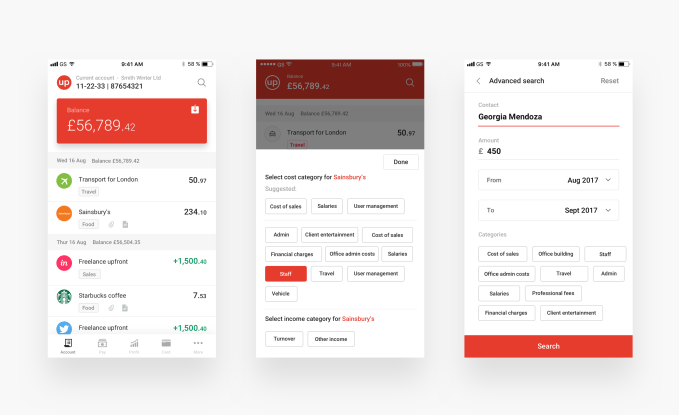Swiss startup Avrios reckons business mobility is going to get a whole lot more interesting as companies adopt more tailored mobility solutions, rather than sticking with the traditional one car per person model.
And at the same time as businesses are seeking to accelerate their progressive cred by moving away from combustion cars to greener alternatives, new urban mobility choices are starting to spring up to offer consumers a multi-modal spectrum of personal transport choice. So the days of businesses offering staff just a few choices of car model are numbered, is the thesis.
But with increased choice to balance, the job of the fleet manager looks set to get more challenging — both when it comes to negotiating with (more and smaller) suppliers; understanding costs and utility; and intelligently matching transportation solutions with business needs and staff desires, argues Avrios. Hence it believes AI will be a key aid to manage increasingly complex fleets.
Its platform, which focuses on passenger car and van fleets and is being used by ~700 customers (predominantly in Europe) to manage ~70,000 vehicles at this stage, is already using machine learning technology to help fleet managers stay on top of data related to car leasing costs.
But Avrios sees this as its foundational play, and is positioning its platform to support a much bigger shift it envisages coming down the pipe — as technologies such as electric cars gain in popularity and get increasingly slotted into business’ fleets.
The rich spectrum of possibility for personal urban mobility can already be glimpsed on the consumer side as ride-hailing giants like Uber turn their attention to car alternatives such as e-bikes and e-scooters.
Businesses, surely, won’t want to be left behind. Which means fleet management platforms will need to be up to challenge of handling all these newer and finer-grained transport options, argues Avrios co-founder and CEO Andreas Brenner.
After running a study on its own customer base last year, the 2015 founded startup estimates that at least 30% of the €60BN annual budget that European businesses currently spend on combustion cars will shift to other options over the next five years.
Its findings also suggest the vast majority of businesses (80%) are currently managing the looming shift in spreadsheets and Access databases — hence Avrios spying an opportunity to step in and support the disruptive market evolution. (And claiming spreadsheets as its main competitor.)
The initial play for its fleet management SaaS platform was also a supporting role (it launched as a dashboard in 2015, but was calling itself a platform by fall 2017), with the team building a system to ingest and process invoices and leasing documents for fleet managers, which Brenner says it has now almost entirely automated.
“You wouldn’t believe but, for example, almost none of the large leasing companies have APIs to import invoices or leasing data — so we essentially had to build a system where we would be able to process these contracts and invoices,” he tells TechCrunch.
“In the early days it all started out manually. But now we can process 99% of the documents fully automatically and this is not just the normal structured form recognition — it’s a true kind of AI system that we’re using. So that’s where most of the magic is happening.”
“The unique thing that we’re able to do is that we’re the only platform that’s able to help our customers import all of the unstructured data from multiple languages. And that’s a lot of information that’s necessary for fleet management, and that saves a lot of time,” he adds.
What he sees coming down the road is more exciting than tech that can automatically ingest French PDF invoices though — howsoever handy that might be — as businesses shift their policies to be able to accommodate a more richly fragmented mobility mix.
Another bit of research it carried out was to look at its customer data to consider how vehicles are currently being used — by looking at mileage and vehicle type — to “deduct the use-case of the vehicle”, as Brenner puts it.
“Our assumption is that any vehicle that isn’t driving a lot or isn’t carrying goods doesn’t make sense from an economic perspective — and is kind of the prime candidate for replacement by other options. At the very least by an electric car,” he suggests. “If I have a car that I’m only driving in the city for 10-20km a day it absolutely doesn’t make sense from an economic perspective to have that be a combustion car.”
That’s how they got to that 30% predictive shift away from combustion cars over the next five years.
They found customers were already implementing car policies that added electric vehicles to their mix (“the more progressive companies are even enforcing a certain share of electric vehicles in their 2019 car policies”, he says).
They also found a “big demand” for corporate car sharing — so the platform offers a booking module to cater to that.
Even more excitingly, they found that some customers were already piloting even greater flexibility — such as offering e-bikes to their staff.
“They’re really thinking hard about how to use all of the new possibilities to further drive employee motivation and retention,” Brenner suggests, arguing that offering staff multi-modal mobility options could be seen as an attractive corporate benefit. “And even expand the addressable groups of their current mobility policy.”
“It can be pretty motivating if, as an intern, you get access to an electric bicycle,” he continues, adding: “These are the kinds of things that we see our customers wrapping their heads around.”
That said, this level of flexibility is only at pilot stage in Europe at present now though.
But he “definitely” sees the European fleet market including electric vehicles in its car policies next year. And, beyond that, there’s potentially all sorts of mobility twists coming down the pipe in the next several years.
“The more creative or advanced options we see more pilots happening in 2019 — and then we think, based on the results of those, we’ll see more disruption in 2020,” he ventures, fleshing out the challenges that this will create for fleet managers.
“If you would put yourself in the shoes of a fleet manager, what you used to do is you used to have… typically two, three large preferred leasing providers. With those you would negotiate terms so that your employees could then choose from typically… 15 models plus some equipment options. That’s what it used to be and that was already considered complex, given all the different maintenance options, financing options etc available. And that’s the first problem we help our customers solve — to understand how is their car policy working?
“But as soon as you add more specialized, smaller suppliers you’re really faced with less volume negotiation. You’re faced with additional overhead. You’re faced with additional number of suppliers, and that’s what we see happening — if you look at the rental car companies they’re offering ever more specific offerings for individual use cases, if you look at shared mobility they’re offering ever more specific offers for specific use cases. And as a fleet manager if you want to somehow provide all that for your employees, for you it just means an explosion of the number of contracts you have to maintain, an explosion of the number of options you have to put into your mobility policy, and that’s an explosion in the complexity of decision making and also in kind of delivery to your employees.
“So that’s what it means for fleet managers — and that’s what we’re helping them with: The cost control, and also the delivery to the employees so they can book a pool car directly through our platform, they can order a leased car, a rental car directly through our platform. So that it all automatically aligns with the policy.”
The company claims its platform helps customers reduce their fleet administration overhead by 30% now and their fleet cost by up to 10%, as well as touting additional benefits around data privacy, and compliance with environmental and owner’s liability laws.
If the quantity and variety of mobility options proliferates, and gets as niche and nuanced as futuregazers suggest, then having a platform to manager cost, compliance and policy complexity starts to look essential — certainly for businesses with large staff and fleet bases to manage.
The majority of Avrios’ current business is in Europe, with customers which include insurance companies, retailers, fashion companies, machine manufacturers and professional service providers.
Brenner says they also have a handful of US and Middle Eastern and African customers (further noting that lots of its customers also have a global fleet footprint).
On the competitive front, he bills what it offers as “a true fleet management platform” — arguing it’s the first such player to do so, suggesting longer-in-the-tooth rivals have only offered fleet administration software and/or fleet management services (while the online portals of incumbents such as AFleetLogistics, Leaseplan and Arval are, as he tells it, “customer retention tools that suggest but don’t really provide transparency”).
“We have a platform approach, providing elements of what software providers would (structured data, reporting, etc) but also elements of what fleet management providers like FleetLogistics would (procurement automation, benchmarking cost against other fleets, optimizing the bidding process for the procurement of new fleets and fleet leases),” he adds. “We are neutral and help customers understand where they are truly losing money.”
The funding being disclosed to TechCrunch now covers a seed round raised in December 2015; a Series A in June 2017; and ~$4M of extension/acceleration funding which it closed in July 2018 — all previously unannounced. The funding total to date adds up to ~$14M — and investors in the business include Lakestar, Notion, Siraj Khaliq (Atomico) and Andrew Flett (Fleetmatics).
Brenner says the extension of the Series A will be used for product development — to “accelerate the transition from a fleet management dashboard towards adding more transportation options”.
It will also be used for scaling the business faster than initially planned. “We’re now considered growth stage so for a growth state startup it’s the typical stuff — product and sales and marketing,” he adds.
“Now we feel like we understand our story, we understand the long term direction we want to take the company, we understand who are customers are, what our position in the market is etc, so it felt like it was the right time to talk to the market a bit more publicly,” he says, explaining why they’ve keep their powder dry on funding announcements up to now.
“It was just a matter of focus on customers and product development rather than anything else.”




















